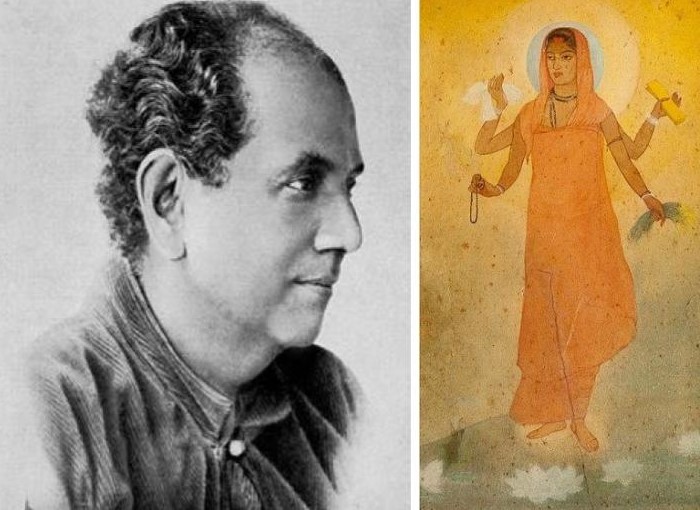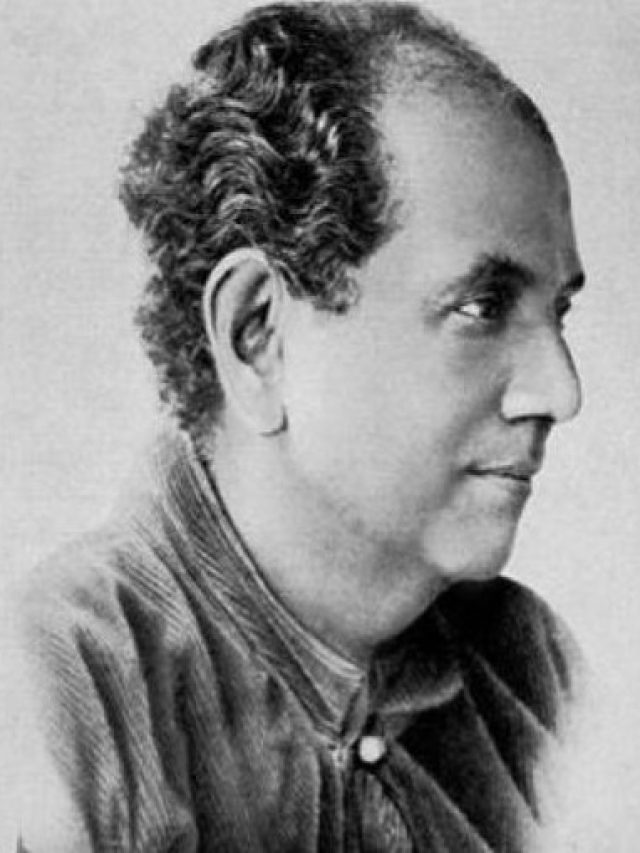A painting that grew more than the artist and enriched the pride and legacy of the nation became a real achievement of an artist’s life. That achievement is imprinted with the name of Abanindranath Tagore, an artist and writer from a Tagorian family. Artist Abanindranath Tagore, the nephew of Rabindranath Tagore, was the first major supporter of the Swadeshi movement in Indian Art and created the ‘Indian Society of Oriental Art’ and later founded the Bengal School of Art. He was also a trailblazer in Bengali literature (especially novellas directed towards children). Some of the famous Abanindranath Tagore books include ‘Raj Kahini’, ‘Nalak’, and ‘Khirer Putul’.
Early Career and Art Movement
Abanindranath Tagore was born into an influential family, carrying a significant artistic heritage through his uncle, the poet Rabindranath Tagore, and his artist grandfather and older brother Gaganendranath Tagore. He started painting early, sent to Calcutta’s Sanskrit College, where he learned to paint with excellent articulation and specialised skills. He was trained by European artists Olinto Ghilardi and Charles Palmer at Calcutta Sanskrit College; he knew to be a master in pastels and watercolours from Ghilardi. He also acquired a profound knowledge of oil painting from Charles.

Courtesy – Amazon
In 1895 artist Abanindranath Tagore started to paint the Krishna-Lila series, which displays an unusual mixture of European and Indian styles. Under the guideship of E.B Havell, Principal of Calcutta School of Art, Abanindranath studied Mughal and Rajput painting styles thoroughly and learned composition and ‘wash-painting’ from Okakura Kakuzō.
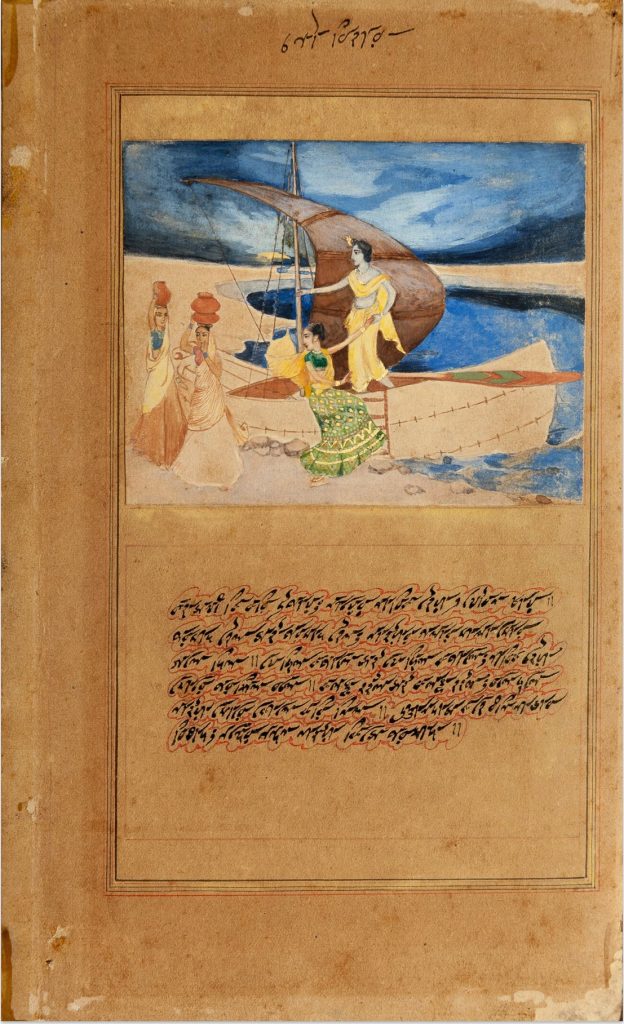
Courtesy – Old Indian Arts
He consumed this nouveau understanding of modern techniques in art and compositions fervently, during a time when the freedom struggles for an independent India reached the peak. Abanindranath Tagore developed a sense of patriotism; an unformidable nationalism, which could only be satiated by delving into art for the country. These concepts led him to establish a Swadeshi movement in Art called the ‘Bengal movement’ or ‘The Indian style’ of paintings. This unyielding nationalism is quite evident in most of Abanindranath Tagore artworks.
Style and Formation of an Artist
Artist Abanindranath Tagore believed in traditional Indian painting techniques and rejected Western Art’s ‘materialistic’ approach. He integrated Chinese and Japanese calligraphic traditions into his style and created a style that depended upon his interests in Mughal paintings. The traditional Indian style blends ‘Indian’ spirituality. He intended to amalgamate the modern pan-Asian artistic tradition and the common elements of Eastern creative and spiritual culture.
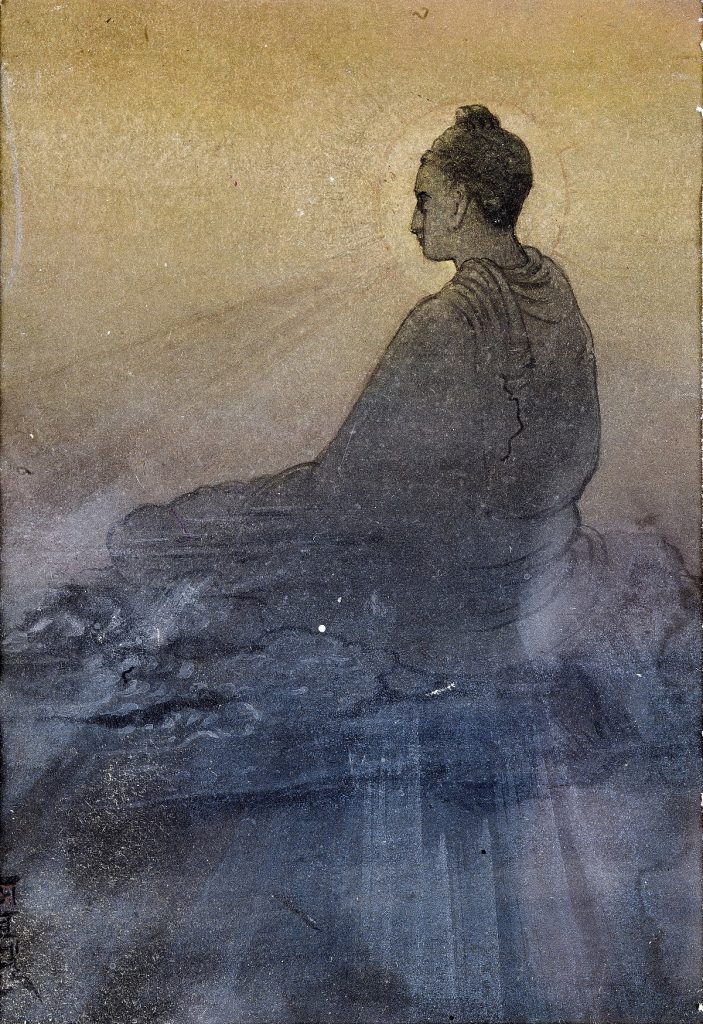
Courtesy – Wikimedia Commons
One of the finest achievements of Abanindranath Tagore is the ‘The Arabian Nights’ series. In the 1930s, he started this series of paintings; an illustration of the Arabian Nights stories, as a lens for colonial Calcutta and portraying its emergent cosmopolitanism. In ‘The Victory of Buddha’, he depicts Buddha’s portraits after achieving enlightenment and trying to find out the ultimate question about human suffering.
Bharat Mata Painting by Abanindranath Tagore
The 1905 artwork – Bharat Mata painting by Abanindranath Tagore is perhaps his best-known work. Abanindranath portrays Bharat Mata as Swadesh’s ideals during the more significant Indian Independence movement. The particular depiction of Bharat Mata by Abanindranath Tagore enriched the notion of nation. She is a saffron-clad holy woman carrying a book, sheaves of paddy, a bit of white fabric and a rosary in her four hands. The illustration has chronological value as it is one of the earlier visualizations of ‘Bharat Mata‘, or ‘Mother India.’
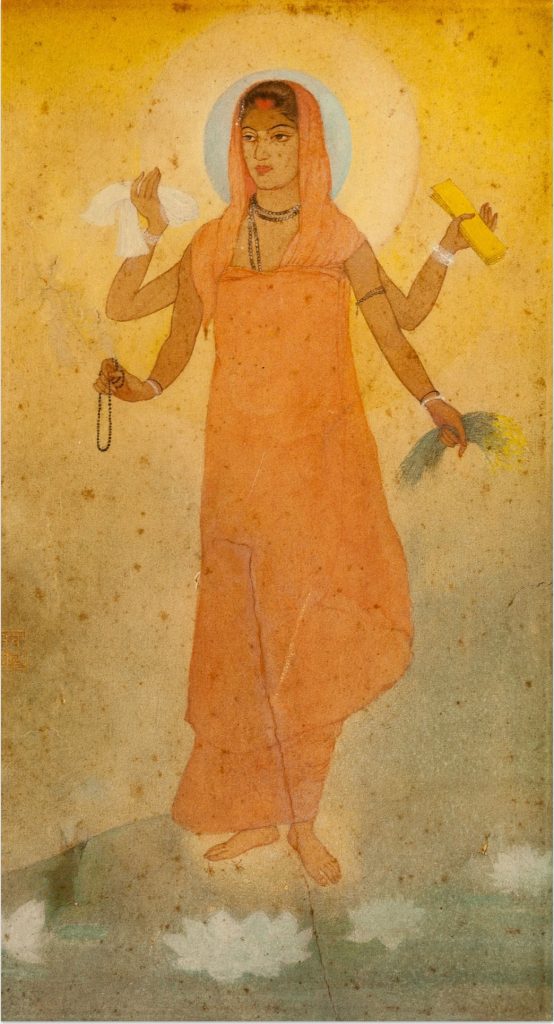
The idea of Bharat Mata was new. Bankim Chandra Chatterjee painted ‘Mata’ in the 1870s, and Abanindranath Tagore manoeuvred it to the nation’s evolving necessities of the freedom movement. Bharat Mata is at the top of Abanindranath Tagore Famous Paintings and notable work of Bengal schools.
Bharat Mata by Abanindranath Tagore was created in a problematic historical situation in India. When Lord Curzon, Viceroy of India, chose to separate Bengal into two parts under his notorious Divide and Rule policy, the eastern part would be for Muslims and the western region for Hindus; that decision busted an Indian mind. The concept of Bharat Mata, a united nature of ‘Indian’ people, is reflected in Abanindranath’s mind when he painted this.
Image Courtesy – The Cultural Me

